With Wales boasting a stunning 1,680-mile coastline, navigating our changing environment demands awareness. How can we explore responsibly?
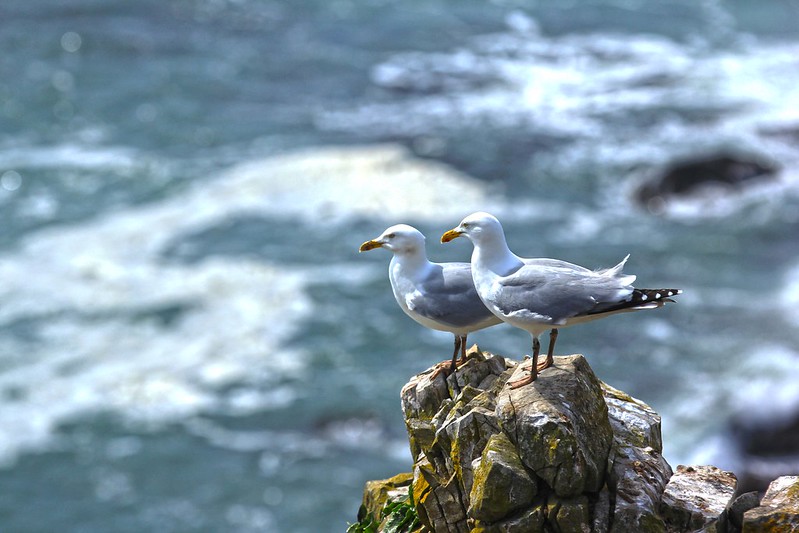
Wales is host to many different spectacular marine species that draw tourists from all over the UK. The breathtaking coastlines, brilliant blue waters and beaches teeming with wildlife attract visitors of both the animal and humankind.
However, this rich marine ecosystem is facing an unprecedented threat: climate change. As the planet warms, the delicate balance of life in these waters is being disrupted, posing challenges to species survival and the health of marine habitats.
Sarah Perry has been conducting vital work for many years to preserve these species in her role as head of the Marine Conservation Team at Cardigan Bay Marine Wildlife Centre. Sarah explains, “The occurrence and distribution of marine life species could be attributed to climate change, warming seas for example leading to changes in prey species occurrence… the most pressing threats include pollution – various forms including contaminants, discarded fishing gear, plastic pollution. Also disturbance from human activities as well as declining prey availability.”
So where can you find these spectacular creatures and how do you catch a glimpse in a mindful way?
Cardigan Bay
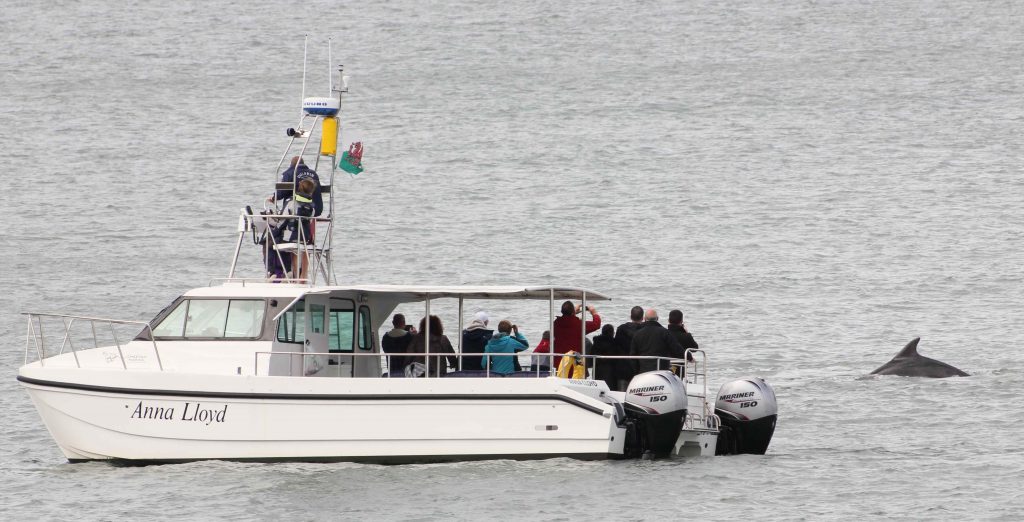
Located in West Wales the bay is a large inlet of the Irish Sea. The area is renowned for hosting one of the largest populations of bottlenose dolphins in the UK, making it a premier destination for wildlife enthusiasts and nature lovers alike.
Sarah guides us through the wide range of marine animals that can be seen there, “Cardigan Bay is home to a great abundance and diversity of marine wildlife. Throughout the year you regularly find bottlenose dolphins, harbour porpoise, Atlantic grey seals and a variety of bird life. There are also seasonal visitors to the bay which include sunfish, basking sharks and even the illusive leatherback turtle. Wales is home to a great abundance and diversity of marine wildlife. In Cardigan Bay we find larger species such as the Cardigan Bay Big 3, bottlenose dolphins, harbour porpoises and Atlantic Grey seals.”
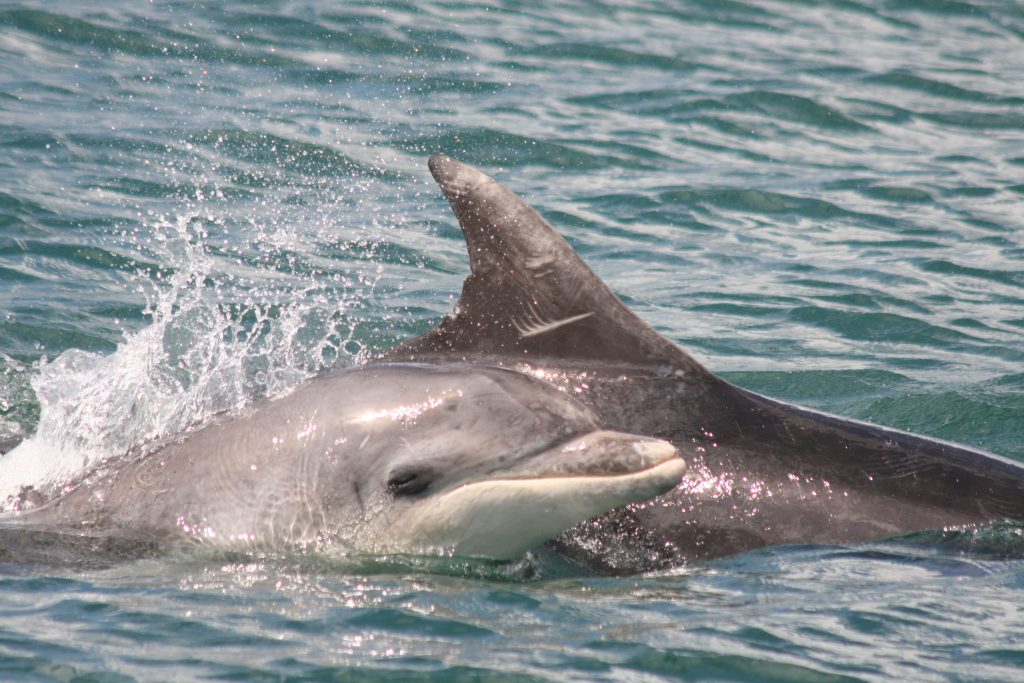
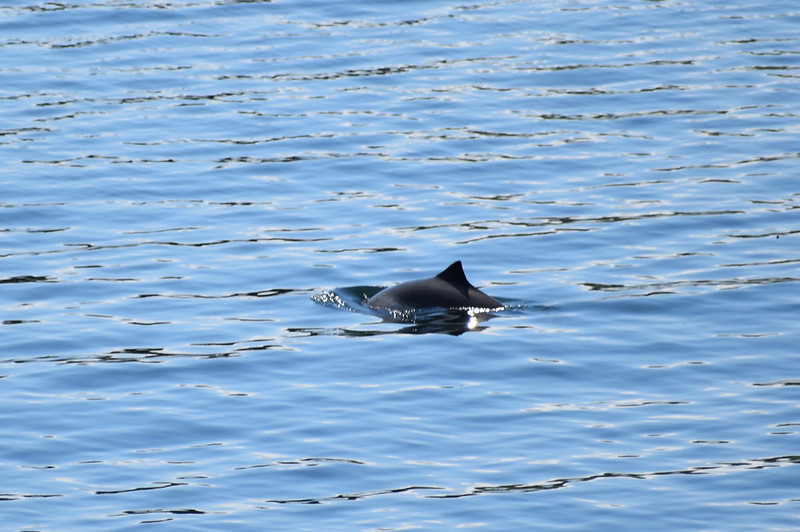

When visiting Cardigan Bay there are a number of wildlife boat tours available and they usually run from Springtime to Autumn. This is the perfect way to spot ‘the big three’ as you maintain a safe distance from the majestic creatures but still get spectacular views.
Sarah is an expert in the behaviour of bottlenose dolphins and explains when the best time to spot them is. “In Wales bottlenose dolphins can be spotted throughout the year with more frequent sightings along the Cardigan Bay coastline from April to November. It is thought that the Bottlenose dolphins head offshore in the winter and a number of the Cardigan Bay population have been observed around Anglesey and other parts of north Wales and Liverpool Bay.”
Delving deeper into the waters of Cardigan Bay you can find some interesting creatures. Sarah explains the seasonal visitors to Welsh waters include sunfish, basking shark and leatherback turtles. Jellyfish species such as barrel jellyfish, moon/common jellyfish, compass and lions mane jellyfish.
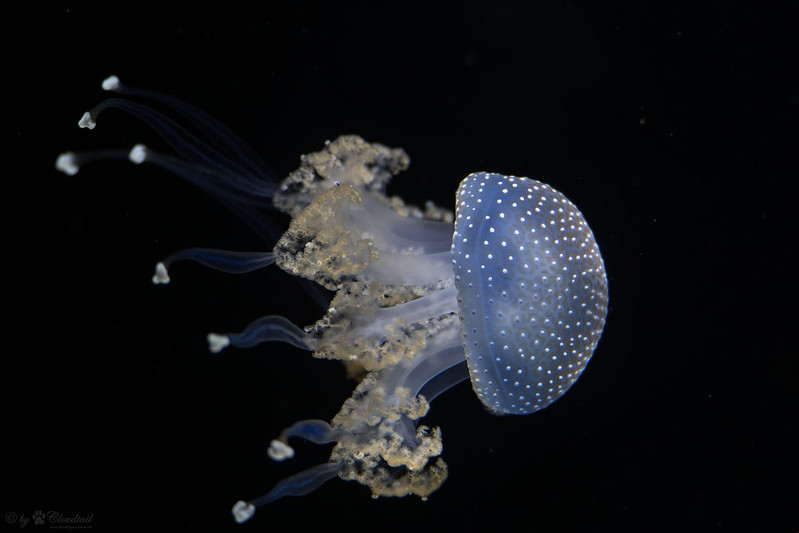

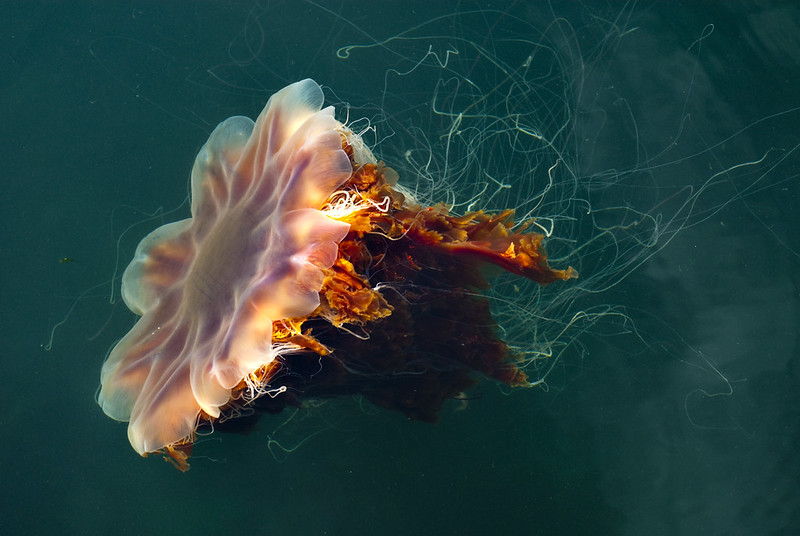
Pembrokeshire and its Islands
Located in the South West of Wales Pembrokeshire is the only coastal national park in the UK. Known for its quaint villages, rugged coastline and bright blue coves Pembrokeshire hosts a diverse marine ecosystem. It also hosts many beautiful islands off its coast.
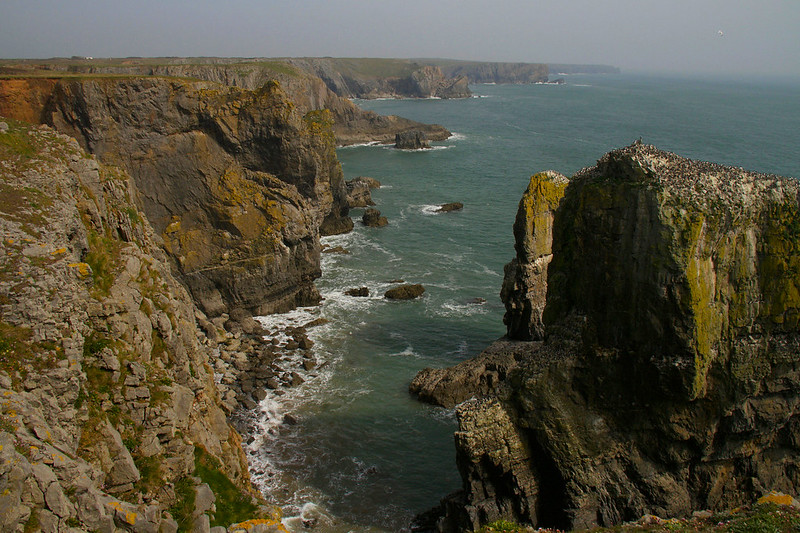
Skomer and Skokholm Islands

One of the most iconic inhabitants of Skomer’s and Skokholm’s surrounding waters is the Atlantic puffin. These colourful birds can be seen during the breeding season from April to July, when they come ashore to nest in burrows. Skomer Island hosts one of the largest puffin colonies in the UK, offering visitors the unique opportunity to observe these charming birds up close.
Skomer is open April-August (Tuesday-Sunday) and in September on a reduced schedule. Pembrokeshire Islands Boat Trips are the only boat operator who land on Skomer. The Wildlife Trust of South and West Wales also has a live stream which is set to return in the Spring when the puffins do!
Grassholm Island
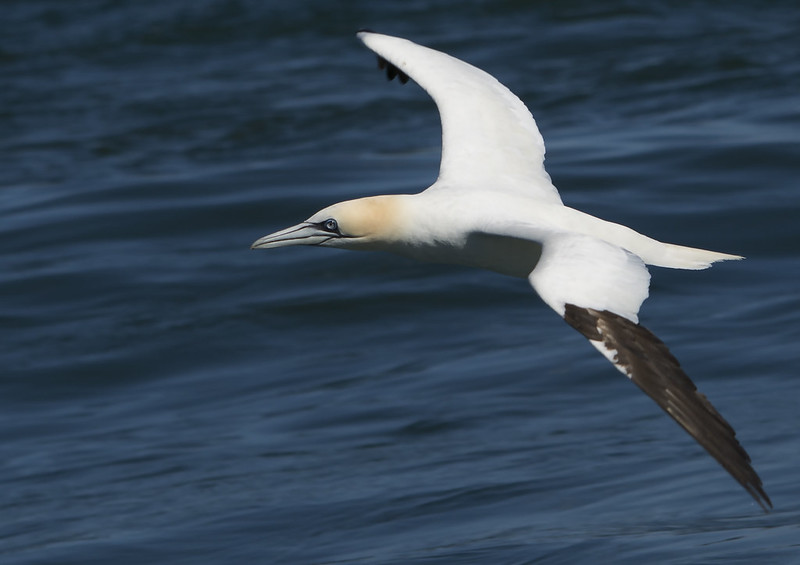
Situated 13 kilometres off the southwestern Pembrokeshire coast, Grassholm Island plays host to the large, striking seabird known as the gannet. With brilliant white feathers tipped with black, a long distinctive neck and pointed beak the gannet dominates the island. An estimated 39,000 breeding pairs call the island home and it is the only colony found in Wales.
Beyond the gannets, the area is a crucial habitat for other seabirds, including puffins, razorbills, and guillemots, which can often be seen diving into the sea to catch fish.
You can take a cruise to the Grassholm RSPB bird sanctuary to view these many seabirds in a safe and respectful way. The Visit Wales website has further contact information on how to book a boat trip to the island.
Newport Wetlands

The RSPB Newport Wetlands Nature Reserve covers an impressive 438 hectares. Established in 2000 to reverse habitat loss the reserve has become home to a multitude of different species. The reserve is open all year round and free to visit.
The habitats found in the wetland are reed beds, salt marshes, wet grassland, and scrubland. These diverse ecosystems harbour many different birds such as waterfowl, wading birds, and migratory species. Some of the rare birds found there is the bearded tit, Cetti’s warbler and the bittern.
Just a short drive or train ride from Cardiff, Newport Wetlands is a popular spot for bird watchers.
Get Involved
The Wildlife Trust of South and West Wales wants the public to get involved to help conserve and protect all the beautiful marine animals found in Wales.
Sarah encourages anyone who wants to immerse themselves in marine wildlife to participate. “(The Trust) has a number of initiatives in place to foster community involvement from volunteering opportunities, visitor centres, and involvement in specific projects such as our Stand for Nature Wales Project and Nature Networks Fund projects. We have a marine conservation Youth Forum, in place to enable people 9 to 24 years to become involved in our work and projects…We also run a number of events and activities throughout the year, providing people with opportunities to become involved in marine conservation.”
These opportunities can be found at https://www.welshwildlife.org/get-involved/volunteer.
Sarah recommends anyone who wishes to explore what marine life Wales has to offer to always remain respectful, “the Wildlife Trust would always recommend that people are respectful of wildlife and give wildlife space and to always follow local marine codes.”
